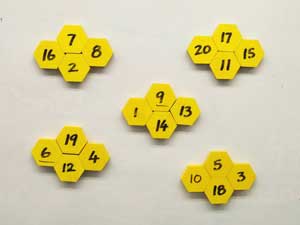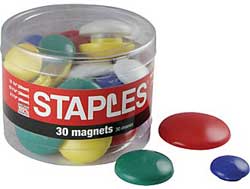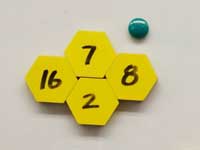
Group Work
After you've used a set of magnetic tiles for keeping track of who has completed an assignment and who hasn't, you'll soon find yourself coming up with other ways of using them. Just remember that it takes a bit of time before the variations make an appearance.
Here's one to get you thinkin'...
![]()
Every Thursday after lunch, my students were given a problem-solving activity to complete. Working in groups of four, they had 15 minutes to try to solve the problem after which 5 minutes was provided for sharing out answers with the other groups.
The groups were created randonly each week. I would shuffle my Class Cards and then deal out sets of four cards. The group members would then be announced, the materials would be distributed, and everyone would get to work.
Well, almost everyone.
Every week we'd have at least one group experiencing difficulty as they got together. The conflict was mainly in the form of a student who didn't want another student in the group. Complaints would be issued which were quickly followed by counter-complaints. Before you knew it, a group would waste 5 minutes on conflict resolution before they even got to the point where they could all concentrate on the problem at hand.
As much as I think it's important for students to learn how to solve their own problems, using a third of the math problem-solving time on non-math issues was not good.
Stepping back to look at the conflict rationally--which, by the way, is hard to do in the middle of the conflict--I came to realize that the conflict was the result of:
- the randomness of the group composition and
- the sudden awareness of who was actually going to be in each group that day
It was the second reason that actually created most of the conflict. The announcement of who was in each group occured just prior to the group gathering together. The immediacy of that knowledge triggered in some students a negative reaction which they brought to the group.
But how about this idea? What if, as the students walked in the door first thing Thursday morning--hours before the problem-solving activity--they saw this on the whiteboard:

The problem-sovling groups displayed for all to see.
Although they couldn't do anything about the composition of their group, they would have a lot of time to get over it and accept the reality that had been created by the randomness of the deck of cards.

For 5 bucks you can get a tub of 30 magnetic buttons at Staples.

As I wandered around the room observing the groups, I would give a group a button as a way to recognize them for either doing a good job of staying on task or working well together.
After receiving the button, one of the group members would go to the whiteboard and stick the button next to their group's tiles.

If you wanted to, the buttons could become a part of the rubric used to assess each group's work that week. For me, though, it wasn't an assessment thing. It was just another way for me to say, "Nice job, hard workers."
